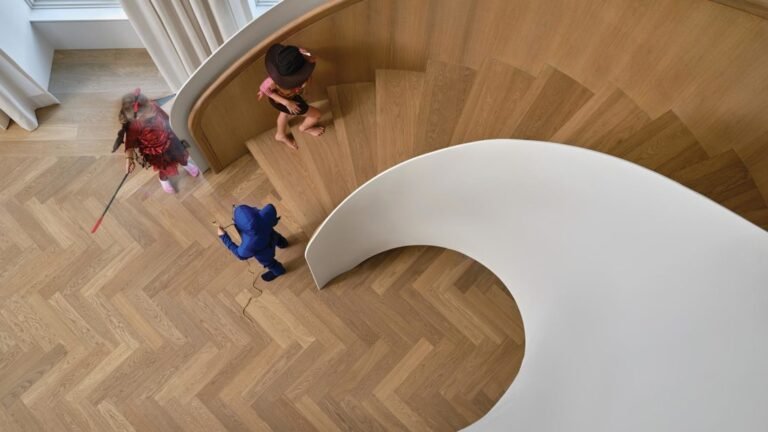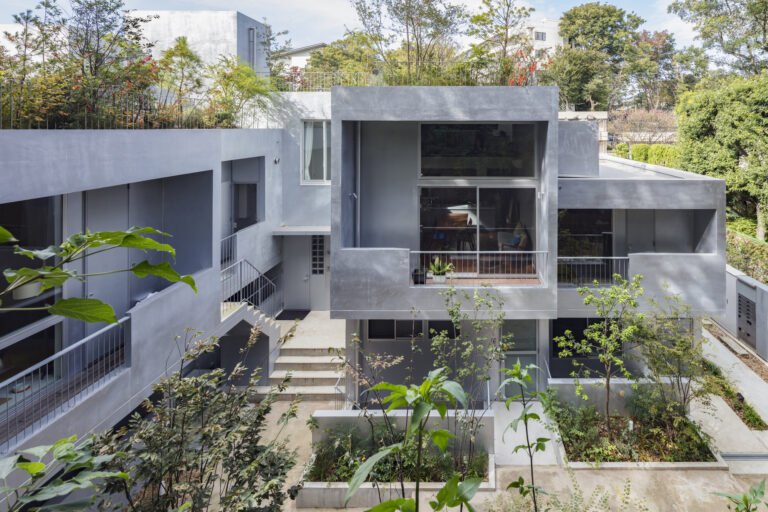40 Retaining Wall Ideas That Will Elevate Your Landscaping | Architectural Digest
Putting up walls can be a good thing. That is, if you’re talking about retaining wall ideas in your landscape design. “At the basic level, a retaining wall is a structure that holds or retains soil behind it,” explains Joe Raboine, director of Belgard Residential Hardscapes, an outdoor hardscapes company. “Though retaining walls are most commonly used to create a functional area out of a sloped terrain, they do serve other functions.”
You might think that retaining wall ideas are all about function—after all, retaining walls prevent soil erosion and reduce the risk of flooding—but they are not all utility; these structures can enhance an outdoor space by creating levels, evening out a hillside, and even using pavers to produce a pathway. “They can also be used to create topographic interest or create smaller features, such as raised garden beds,” says Collin Koonce, director of landscape architecture and urban planning at BKV Group, a holistic architectural design firm, based in Washington, D.C. These builds can even double as seats or corral all your backyard greenery in a neat landscape.
Aesthetically, a retaining wall can turn an unworkable incline on the land into usable, uniformed surfaces, notes Mauricio Lobeira, Monterrey, Mexico-based architect, interior designer and cofounder of Ten Plus Three. “Many retaining walls end up as garden or terrace backdrops,” he adds.
What’s more, creating a retaining wall can boost the value of your house. “Flatter and uniformed surfaces are more expensive than steep ones,” Lobeira says. “Steep surfaces almost always have to have some sort of intervention in one way or another.” Retaining wall materials including concrete blocks, bricks, wall stones, railroad ties, or treated timbers—allowing for plenty of hardscaping options that suit your house. Here, 40 creative retaining wall ideas that are a step above the rest.
Concrete retaining wall with flower beds
For a sleek design, look to a concrete retaining wall with built-in flower beds. The juxtaposition of industrial concrete and verdant flora adds a wow factor to a front yard. “Adding ornamental plants to the finished wall also embraces its natural surroundings,” Lobeira says.
Rocky retaining walls
Use rocks and boulders to create a retaining wall that blends into the natural environment. A woodsy yard with access to nature is a shoe-in for this rustic elevation.
Natural stone walls for durability
Natural stone retaining walls can be a slightly more expensive option compared to other materials like wood, for example, but they’re durable and create a timeless look. “The placement, pattern and repetition of natural stones and bricks can create a contemporary look,” Lobeira says. Stone options like granite and limestone give off a traditional aesthetic.
Incorporate steps in the design
Since retaining walls are often used in sloped areas to transform that part of the yard into usable space, consider adding steps to your retaining wall for easy access to the different levels of your yard.
Timber retaining walls are cost-effective
“Wood is an inexpensive and common choice for a retaining wall,” Raboine says. Since wood is an organic material, expect it to have a shorter lifespan compared to solid options like stone. You can extend the longevity of wood retaining walls by opting for pressure-treated wood and using a wood preservative. Be careful with planting too close to the wall as the chemicals in treated wood can harm flowers and greenery.
Include a modern firepit
To get the most functionality out of every square foot of your backyard, doubling up the retaining wall’s purpose with a cozy firepit. Think of it as a sunken, outside sitting room for year-round entertaining. Los Angeles landscape architect Patricia Benner, principal at Benner Landscape Design, stacked a stone wall that becomes a built-in stone seating area. “It has a nice, organic flow and makes the seating feel of a piece with its surroundings,” she says.
Add wall seating
Incorporating seating into your retaining wall design gives the structure utility beyond beauty. “The retaining wall’s function is vital,” Lobeira says of the retaining wall that is also a built-in concrete bench. These natural stone seating platforms are particularly welcome in smaller backyards.
Light up for a glow
Mood lighting is a surefire way to bring in a wow factor to your wall. Not only do lights work as safety mechanisms, they also add ambiance to your outdoor space, Raboine says. Keep in mind it’s easier to run electrical lines at installation as opposed to adding lights later. Talk to your contractor about light design upfront.
Mix retaining wall materials
Can’t decide between retaining wall materials? Use more than one. Poured concrete walls softened by wood accents on benches and patio deck downplay the industrial feel. Natural stone with fine gravel make the outdoor space feel as if it’s always been there.
Opt for black
An all-black retaining wall recedes into the background, yet looks striking. The sleek hue works wonders for a landscape that benefits from a high-contrast, modern design.
Cream for a welcoming environment
For a warm and welcoming design idea, such as a patio hugged in greenery, consider a cream-colored retaining wall. It’s the middle ground between edgy concrete and natural stone.
Gabion walls for sturdy design
Gabion comes from the Italian word gabbione which means “big cage.” It’s a reasonable description for this hardscape design that is made from a wire container and holds other materials, usually rocks.
Boulders offer a jagged look
For a rugged look, consider a retaining wall made from large boulders. In some cases, they can be less expensive compared to other options and complement a more rustic backyard. One of the biggest advantages of boulder walls is that they offer natural drainage.
Make steps out of stone
Consider a retaining wall that incorporates oversized stone steps into the design. Flagstone, bluestone, and fieldstone are all popular choices among homeowners. Premium materials, such as slate or granite, add panache.
Vertical sleepers for small retaining walls
If you like the look of wood retaining walls, use vertical sleepers to create a small, fence-like wall—perfect for separating garden areas from the rest of the yard. Play around with different heights to add visual movement to the wall structure.
Flowing design ups the ante
A fountain, or another water feature, makes the retaining wall dynamic. Usually, water flows from a spillway inside the wall into a basin below. It is then recirculated back into the spillway.
Highlight the curves in your yard
Consider using retaining walls to create a sculptural element and turn your yard into a modern art piece. Accentuate curves to spice up a basic plot of carpeted lawn.
Brick retaining walls add classic charm
Consider a brick retaining wall to add classic charm to your front or backyard landscaping. Choose between traditional red brick (well suited for colonial-style homes) or a natural stone retaining wall that may look good with a craftsman exterior.
Stack tiered retaining walls in the backyard
Tiered retaining walls are fantastic ways to dress up a hill or slope in your yard and make the space more usable. Walls like these also create greater possibilities for your garden design, opening up plenty of usable space for plantings.
Pair short retaining walls with prairie or native plants
A short stacked-stone retaining wall is the perfect complement for a prairie or native plant garden. Native plants have a distinctly wild look, so pairing them with natural stone creates more realistic imagery and a low-maintenance design.
Steel retaining walls add a rustic look
Steel retaining walls offer a distinct look to a project, and the rust color from the materials can add an extra pop to a garden. In some ways, this landscaping idea embodies a farm or agricultural setting where steel barns and tractors are common. For this reason, steel retaining walls may look good if you like farmhouse-style decor.
Adorn a retaining wall with a vertical planter
Many retaining walls provide the perfect space to create a vertical garden. Stacked stone walls or block retaining walls make good choices for vertical gardens as they have plenty of nooks to tuck plants into. If you plan to create a vertical garden retaining wall, consider how much sun you expect the wall to get and be sure to integrate an irrigation system.
Line up concrete planters
Consider crafting a retaining wall out of concrete planters. Use ridges to trick the eye into thinking that the series of planters is one elongated piece. The mix of natural and artificial elements is sure to make the scene pop.
Expand patio space with a retaining wall
Use a retaining wall to reinforce or expand your patio area. Consider adding elements like a firepit or Adirondack chairs to maximize the usable space.
Center a retaining wall around a tree
Building retaining walls isn’t necessarily the easiest DIY project, but if you’re eager to make one yourself, consider crafting a small retaining wall around a tree. Use it to hold soil at the base so you’ve got ample room to plant flowers and greenery.
Unify different areas with a retaining wall
A retaining wall that encircles different areas of your yard can help unify the space into a coherent whole. In this yard, the open-ended retaining wall distinguishes the shrubs, while spilling into the gravel of the patio for an easy transition.
Create a rock wall garden
Traditionally, rock gardens include a hearty collection of rocks (obviously) and alpine plants, which are plants that grow in a mountain climate above tree lines. If you opt for a rock retaining wall, consider including these types of plants in the design to emulate a mountainous garden. Popular alpine plants include Primula, Dianthus, and thyme.
Add drooping flowers
Plant drooping or “spiller” flowers near the edge of your retaining wall for stunning, cascading imagery. Consider including plants like moss phlox, creeping thyme, or rock cress.
Embrace cascading greenery
If you don’t like the bright colors of flowers, consider incorporating cascading greenery instead. Plants like silver fall Dichondra, trailing rosemary, or Lotus berthelotii make a great choice and a vibrant addition to a neutral-colored wall.
Choose arid climate plants for low-maintenance greenery
If you like the idea of dressing up your retaining wall but aren’t as confident in flower and plant-tending skills, consider planting succulents on and around your retaining wall. Succulents like Agave, Dudleya, and Aloe are low-maintenance and great for outdoor growing.
Lush greenery in wicker creates a cottage feel
Use lush greenery, or even plant a lettuce garden, to create a cottage-like feel, as well as Wicker-style retaining walls that add to the charm. Stacked worn rocks work equally well when paired with moss and native flowers that give nod to a fairy-tale backyard.
Contrast your retaining wall against a tree line
Create contrast between your hardscape elements and the natural elements in your yard by pairing a retaining wall directly in front of a line of lush evergreen trees.
Install a mini retaining wall
Elevation changes, big or small, can make a big difference in your landscape design. Adding a wee retaining wall to a yard that may not technically need one makes a statement and creates visual interest.
Dress up the driveway with a retaining wall along the sides
Use a retaining wall along your driveway to help keep your car’s path free from debris and create a formal entryway onto your property.
Cacti offer a southwest feel
For a wall that’s bound to wow your neighbors and provide a little southwestern flair, consider planting cacti along a retaining wall that can also double as a flower bed. Organ pipe or candelabra cacti make great yard options, although it’s important to keep your region’s weather in mind as these plants generally like warmer climates.
Don’t ditch the picket fence
Even if you have a sloped lawn that could benefit from a retaining wall, you don’t necessarily need to compromise your dream of having a white picket fence out front, too. Add a picket fence—or any wooden fence for that matter—on top of the retaining wall, then plant bright flowers and shrubs for that classic look.
Keep it minimal
Use a retaining wall to accent the subtle contours of your lawn in a classy, minimalistic way. Using rocks or other natural materials may help the wall to blend seamlessly into the lawn.
Shrubs add a formal look
Fans of a well-manicured, formal garden might like planting sculpted shrubs along their retaining walls. They add a welcome texture to the lawn and an air of luxury.
Consider a DIY concrete bag retaining wall
Content
This content can also be viewed on the site it originates from.
Concrete bags sound uncouth, but the final retaining wall reveal is stellar.
To make concrete, you typically have to mix cement with water and aggregates, put it into a mold, and let it dry and set. Generally, this is an integral step when making retaining wall blocks. However, this retaining wall idea challenges that entire idea. Bags of dry cement are piled together like blocks to build the wall, and then the entire structure is thoroughly sprayed with water from a hose. Once it sets, the bags are either burned or ripped off, leaving you with bag-shaped concrete blocks.
Paint a retaining wall mural
Hire a pro artist, or pick up a set of brushes yourself to reinvent a concrete retaining wall by painting a mural on it. Look for concrete paint or outdoor paint specifically as it will hold better in the long run.
Fountains add a peaceful element
Use the retaining wall as an extension for a fountain or a water feature. Contrasting colors bring life to the yard, while the soothing sound of water creates ambience for a calming outdoor garden.




